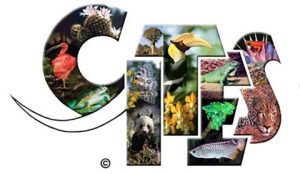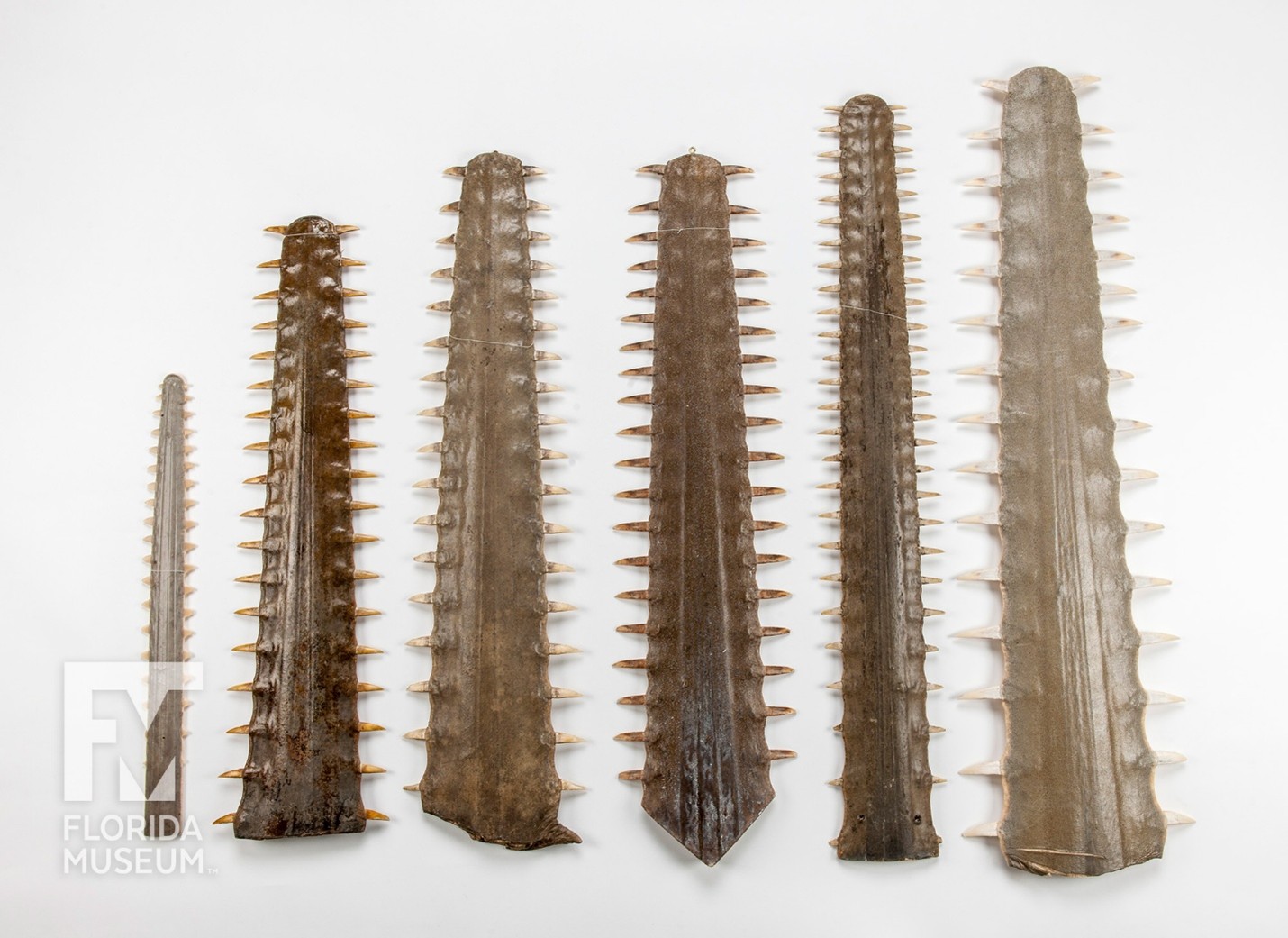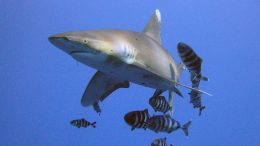On July 1 more than 70 species of sharks and rays, including beloved species like whale sharks and manta rays, were proposed for strict protections under the Convention on International Trade in Endangered Species, or CITES (pronounced “sight-ease”). Oceanic whitetip sharks — once considered one of the most-abundant large animals in the ocean but whose populations have declined by 90% or more — are also up for protections.
These proposals have the potential to help transform international shark conservation.

This year is an important conservation milestone: the 20th Conference of the Parties (COP) of CITES. Described as “the world’s largest and most influential meetings on international wildlife trade,” the nations meeting at the conference will debate and vote on a variety of proposals that help regulate global trade of plants and animals.
International trade poses a major threat to many species, since the highest demand for wildlife products like meat, fins, feathers, or wood often comes from countries outside of these species’ native ranges. The decisions made at CITES, therefore, have the power to save species of conservation concern from extinction.
Here’s how CITES works, including a look at some of the shark conservation proposals being debated this year.
How CITES Works
CITES — an international treaty among 185 signatory nations known as Parties — places each species it regulates on one of three Appendices, and the goal of most CITES proposals is to get species of conservation concern listed on one of them.
Before that, one or more Parties submit a proposal to protect a species or group of species, often with cosponsors from other Parties to suggest broad support. These proposals go to a vote at COP meetings and must receive a two-thirds majority from the Parties to pass.
In addition to the Parties, a variety of entities with observer status can attend COPs and speak without formally voting. This includes the IUCN and environmental nonprofits. One such nonprofit is the Wildlife Conservation Society, for which I currently serve as a conservation communications consultant. WCS is a longtime leader on global shark and ray conservation and has participated in CITES for many years.
Most discussions focus on Appendix I and Appendix II. An Appendix I listing results in a strict ban on international trade in a species. For example, all species of sawfish (critically endangered shark-like rays) are listed under Appendix I. This means that even though their rostrum, or “saw,” is a popular tourist curio, it is illegal to transport one for sale across national borders. As this is the highest level of protection, it requires the highest standard of evidence, and it is the most difficult listing to achieve. Fortunately, relatively few species need an Appendix I listing.

An Appendix II listing does not ban international trade in products from a listed species. Instead, it heavily regulates that trade, requiring the exporting country to demonstrate that the product was harvested sustainably. (To prove that a product comes from a sustainably managed population, it must carry a document called a “non-detriment finding,” without which trade is banned.) This is the Appendix that most shark products — including jaws, meat, and fins — are regulated under.
CITES also has a powerful rule called the “Look-Alike Rule.” This comes into play where an endangered species looks so similar to a non-endangered species that we can’t expect a customs agent to be able to tell the difference. In this case, the non-endangered species receive the same level of protection as endangered species, because that’s the best way to protect the endangered species. At the most recent Conference of the Parties in 2022, the Look-Alike Rule was used to get the vast majority of shark species whose fins are traded in the global fin trade listed under Appendix II. Now, if customs agents can’t tell whether a detached fin comes from a critically endangered shark species or a similar-looking species with a healthy population, both are restricted and require a non-detriment finding for legal trade. As of 2022, all 56 species of sharks in family Carcharhinidae and all the hammerhead sharks in family Sphyrnidae are listed under Appendix II, many under the look-alike rule.
It’s important to also note what CITES cannot do. As it only regulates international trade, a CITES listing by itself has absolutely no legal authority to stop a species from being killed and used in its home country.
It also doesn’t make it illegal to kill endangered species in general. It just regulates or bans international trade in products made from those species, or in the species themselves (live specimens).
But since so much of the threat to so many species comes from market demand through international trade, this can still be enormously powerful.
Additionally, CITES listings can (and do) result in improving complementary domestic regulations, because countries want to be able to meet the standards needed for a non-detriment finding — for example, so they can legally export shark products.
For sharks, this has often taken the form of improved fisheries quotas and catch limits, including in many countries which previously had essentially no shark fisheries management in place. A new analysis found that for 44 species of sharks and rays listed on CITES, 48% of countries have improved their regulations, including improved data collection and improved compliance and enforcement of rules.
Sharks and CITES
Historically, CITES has been very much focused on terrestrial species conservation — it’s no accident that the logo is shaped like an elephant, as much of the early discussions concerned the international trade of elephant ivory.
However, in recent years, marine species in general, and sharks and rays specifically, have increasingly become part of the agenda. This process first started with species with no significant commercial fishery — gentle giants like whale and basking sharks. It later expanded to listing commercially fished species such as threshers, makos, and porbeagles under Appendix II.
Progress has been slow but steady, resulting in lots of saved sharks along the way.
Proposals at the Upcoming COP
This year’s CITES proposals include seven covering sharks and rays that would affect 70 species.
Several species already listed under Appendix II are proposed for a transfer to Appendix I, strengthening their protections by fully banning international trade in products from the species. This includes mobula rays (also known as devil rays, which include manta rays) whose filter-feeding gill plates are used to make a traditional Chinese medicine tea.
Oceanic whitetip sharks, one of the species of sharks most affected by industrial scale fishing, are also proposed for a transfer from Appendix II to Appendix I.
There’s also a proposal for a “zero quota” for Appendix II listed guitarfish — functionally similar to an Appendix I listing but procedurally slightly different and generally considered to be more appropriate for species who are threatened now but can bounce back relatively quickly if pressure is reduced. The Wildlife Conservation Society’s statement on this notes that “these proposals reflect what scientists and governments have known for years: for some shark and ray species, sustainable trade is not feasible, and the strongest protections are the only path forward.”
There are also some proposals for listing new species under Appendix II. The Wildlife Conservation Society’s statement notes that “with 90% of the shark fin trade now regulated, focus must shift to other drivers of shark overfishing.” One proposal aims to list deepwater gulper sharks, whose oily livers are used as squalene in cosmetics and pharmaceutical products. Deep sea species like gulper sharks were out of touch and out of danger because fisheries couldn’t reach them, but newer technology, driven by demand for squalene, have changed the equation.
Another proposal calls for listing smoothhound sharks, whose meat is eaten all over the world. The shark meat trade notably involves different species and different end-user markets than the better-known shark fin trade, and smoothhound meat is eaten in things like South American ceviche and European fish and chips.
Learn More and Get Involved
The actual COP will take place in Samarkand, Uzbekistan from November 24-December 5, although many countries will decide whether or not they’re supporting or co-sponsoring proposals long before then.
Though the meeting is not open to the public and only governments, not individuals, get to vote, many environmental nonprofits attend as observers. Some, like the Wildlife Conservation Society, will be sharing updates and information in real time on social media, including opportunities for the public to get involved at key moments and encourage their governments to support these key proposals.
The fate of these amazing and beloved animals comes down to these upcoming votes. Let’s not miss this important opportunity.
Shiffman, who often writes for the news section of The Revelator as a journalist, wrote this editorial in his capacity as a conservation consultant working with the Wildlife Conservation Society.


Previously in The Revelator:
Something for Everyone: Wildlife Trade in Paradise



